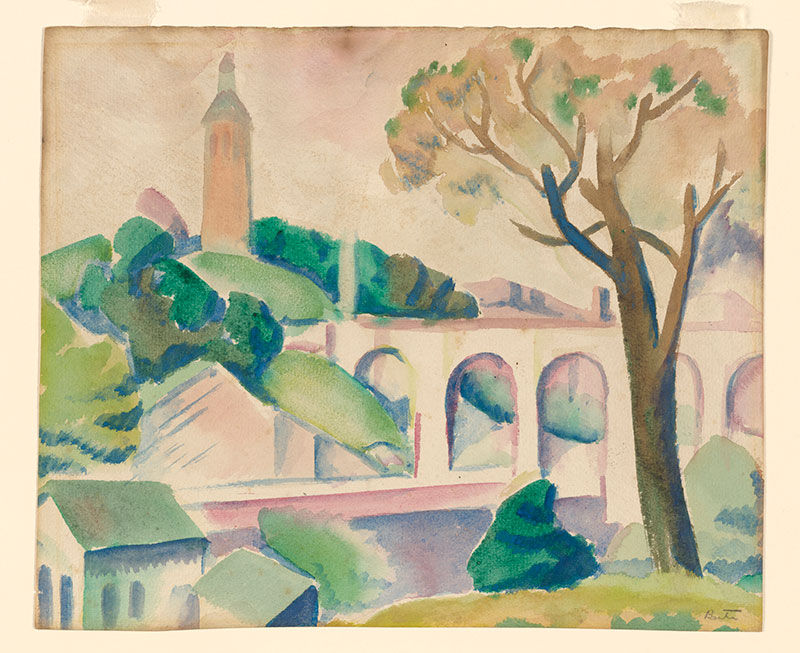
In the summer of 1908, Thomas Hart Benton left Chicago for Paris, where he enrolled in the Académie Julian, a school popular among foreign students and host to many French artists as an alternative to the official École des Beaux-Arts. Receiving his formal training at the academy, Benton also embarked on a rigorous independent study of the innovations of the French avant-garde. Though he would ultimately renounce modernism in favor of Regionalism, a naturalistic style depicting the American social landscape, Benton continued to explore modernist aesthetics for a brief period upon his return to the United States in 1911. In Highbridge, the influence of Paul Cézanne is clearly evident, particularly his manner of breaking up form into areas of color and dissolving large shapes into separate interlocking planes. The result is a formal structure that creates an interplay between the illusion of spatial depth and the flat surface of the picture plane. While its depiction of a small rural town evokes Cézanne's images of the roman aqueducts in Aix-en-Provence, the subject matter of Highbridge also points toward Benton's growing interest in the vernacular forms of the American landscape, which would come to be a hallmark of the Regionalist movement. Much of Benton's early work was destroyed in a fire at his home in Neosho, Missouri in 1917, marking Highbridge as an important example of the artists brief period of experimentation with modern European painting. Works cited: Matthew Baigell, Thomas Hart Benton (New York: Harry N. Abrams, inc., Publishers, 1975); Thomas Hart Benton: A Retrospective of His Early Years, 1907-1929 (New Brunswick, New Jersey: Rutgers University Art Gallery, 1970).
Inscribed on lower right corner in graphite, "Benton".
